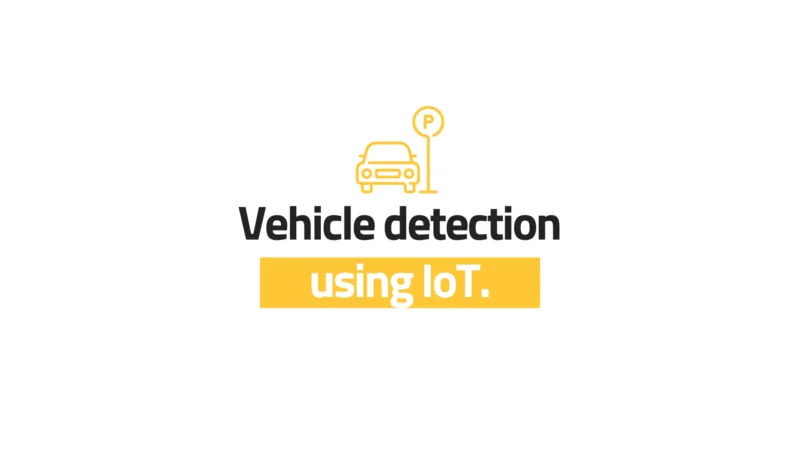Greetings, fellow Nawala! May you always be in good health.
This is the IAES Nawala from the Institute of Advanced Engineering and Science. Today we will share news related to vehicle detection using IoT. Vehicle detection using IoT is the integration of IoT technology into embedded systems such as microcontrollers and microprocessors. These systems are equipped with connectivity, sensors, IoT protocols, and security for secure data exchange and control. Mohammed et al. (2023) discussed the application of you only look once (YOLO) for vehicle detection and classification. This research evaluates the performance of YOLOv3, YOLOv4, and YOLOv5 in detecting and classifying cars, trucks, buses, motorcycles, and bicycles. This study uses training images from the common objects in context (COCO) dataset and open images, as well as test images taken on a highway in Malaysia, which represent different lighting and vehicle variations. Experimental results show that YOLOv5 detects vehicles more accurately but slower than YOLOv4 and YOLOv3. This paper suggests that future research includes experimenting with newer versions of YOLO.
Vehicle detection and classification using three variations of you only look once algorithm
Gehad Saleh Ahmed Mohammed, Norizan Mat Diah, Zaidah Ibrahim, Nursuriati Jamil
Vehicle detection and classification are essential for advanced driver assistance systems (ADAS) and even traffic camera surveillance. Yet, it is challenging due to complex backgrounds, varying illumination intensities, occlusions, vehicle size, and type variations. This paper aims to apply you only look once (YOLO) since it has been proven to produce high object detection and classification accuracy. There are various versions of YOLO, and their performances differ. An investigation on the detection and classification performance of YOLOv3, YOLOv4, and YOLOv5 has been conducted. The training images were from common objects in context (COCO) and open image, two publicly available datasets. The testing input images were captured on a few highways in two main cities in Malaysia, namely Shah Alam and Kuala Lumpur. These images were captured using a mobile phone camera with different backgrounds during the day and night, representing different illuminations and varying types and sizes of vehicles. The accuracy and speed of detecting and classifying cars, trucks, buses, motorcycles, and bicycles have been evaluated. The experimental results show that YOLOv5 detects vehicles more accurately but slower than its predecessors, namely YOLOv4 and YOLOv3. Future work includes experimenting with newer versions of YOLO.
In addition to road applications, Kusuma et al. (2023) implemented vehicle detection in parking lots. They presented a touchless parking portal designed to minimize direct contact in response to the COVID-19 outbreak. The system uses ESP32-CAM cameras, ultrasonic sensors, passive infrared sensors, servo motors, LEDs, LCDs, buttons, and other components. The system was built using Arduino IDE, Android, and Blynk. The authors report that the overall system performance reached 100% after thorough testing and analysis.
An internet of things-based touchless parking system using ESP32-CAM
Vicky Andria Kusuma, Hamzah Arof, Sena Sukmananda Suprapto, Bambang Suharto, Rizky Amalia Sinulingga, Fadli Ama
As technology continues to advance, governments around the world have implemented health protocols to minimize direct contact between individuals and objects, in response to the ongoing COVID-19 outbreak. To address this need, a touchless parking portal was designed using a microcontroller-based and internet of things (IoT) -based system, with the Arduino UNO microcontroller device serving as the core component. The system employs an ultrasonic sensor HC-SR04 and passive infrared (PIR) to detect vehicles as they arrive at the portal area, in addition to requiring an ESP32-CAM camera, servo motor, light-emitting diode (LED), I2C 16×2 liquid crystal display (LCD), push button, universal serial bus (USB) to transistor-transistor logic (TTL) converter, power supply, and portal bar. The system builder software was developed using Arduino integrated development environment (IDE), Android, and Blynk. The authors conducted thorough testing and analysis of the system, concluding that its overall performance reaches 100%. Nevertheless, despite the extensive experimentation conducted, there remains a possibility that certain factors could still affect the results. Therefore, caution is advised when interpreting the outcomes of this experiment.
Some of the articles above are a small part of the research on vehicle detection using IoT. To get more information, readers can visit the International Journal of Reconfigurable and Embedded Systems (IJRES) page and read articles for FREE through the following link https://ijres.iaescore.com/.
By: I. Busthomi

